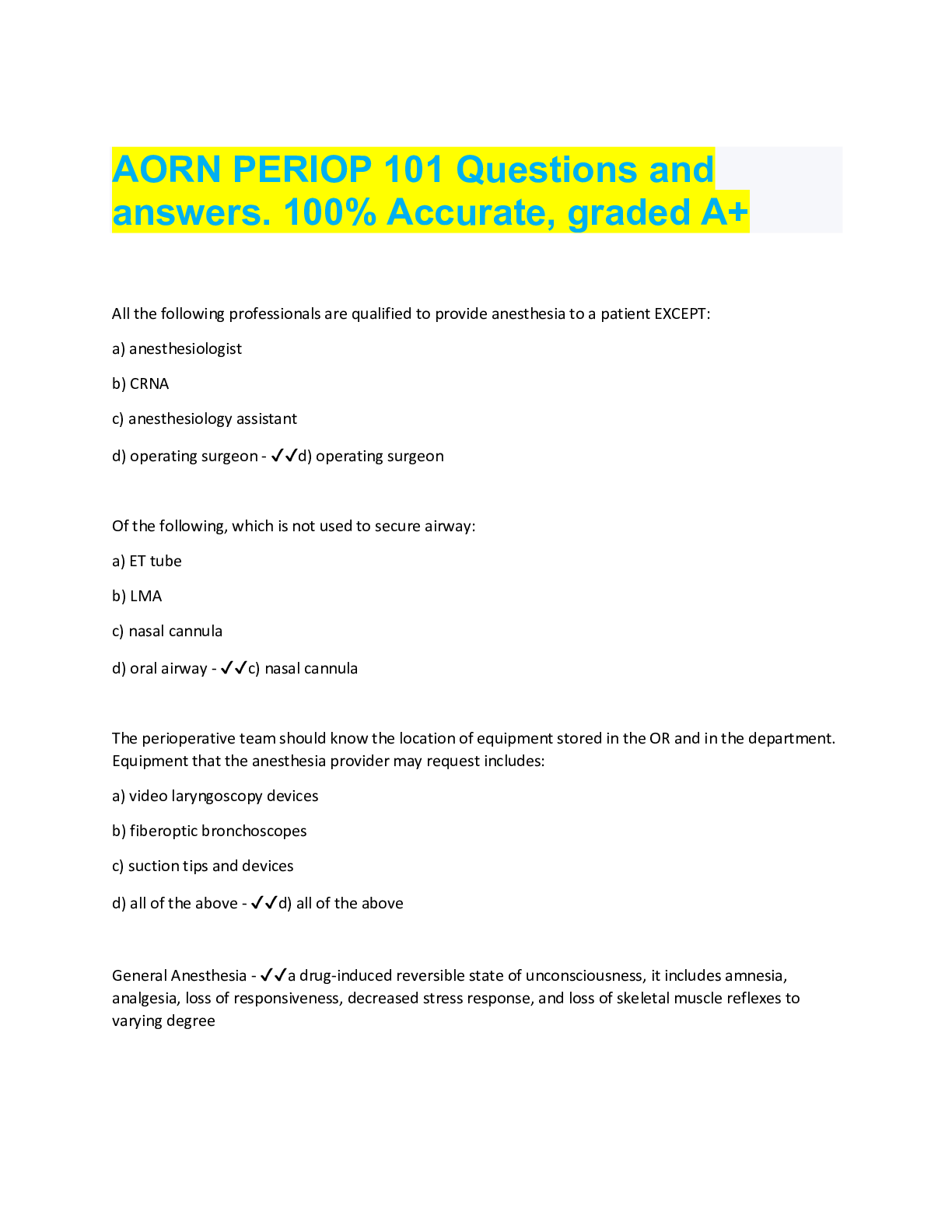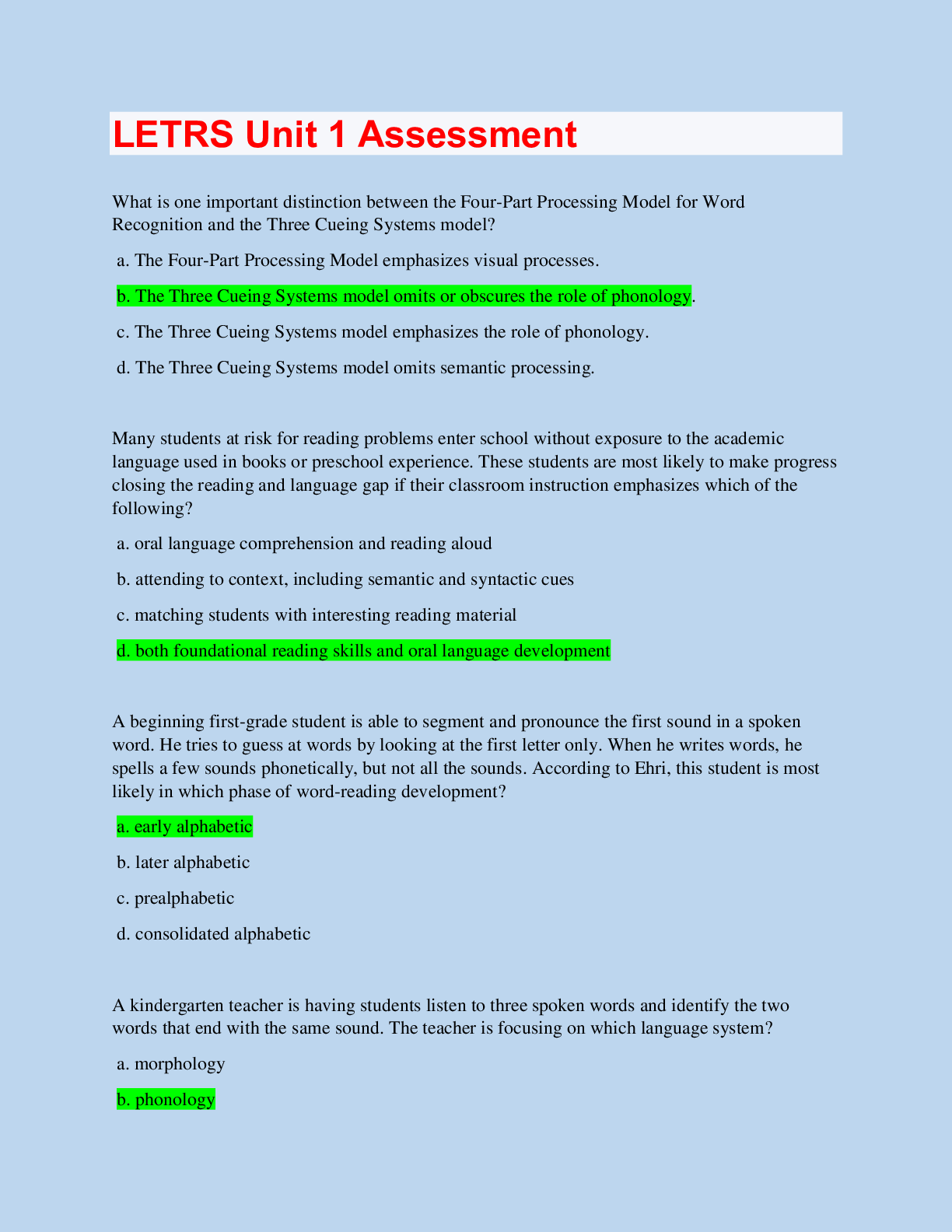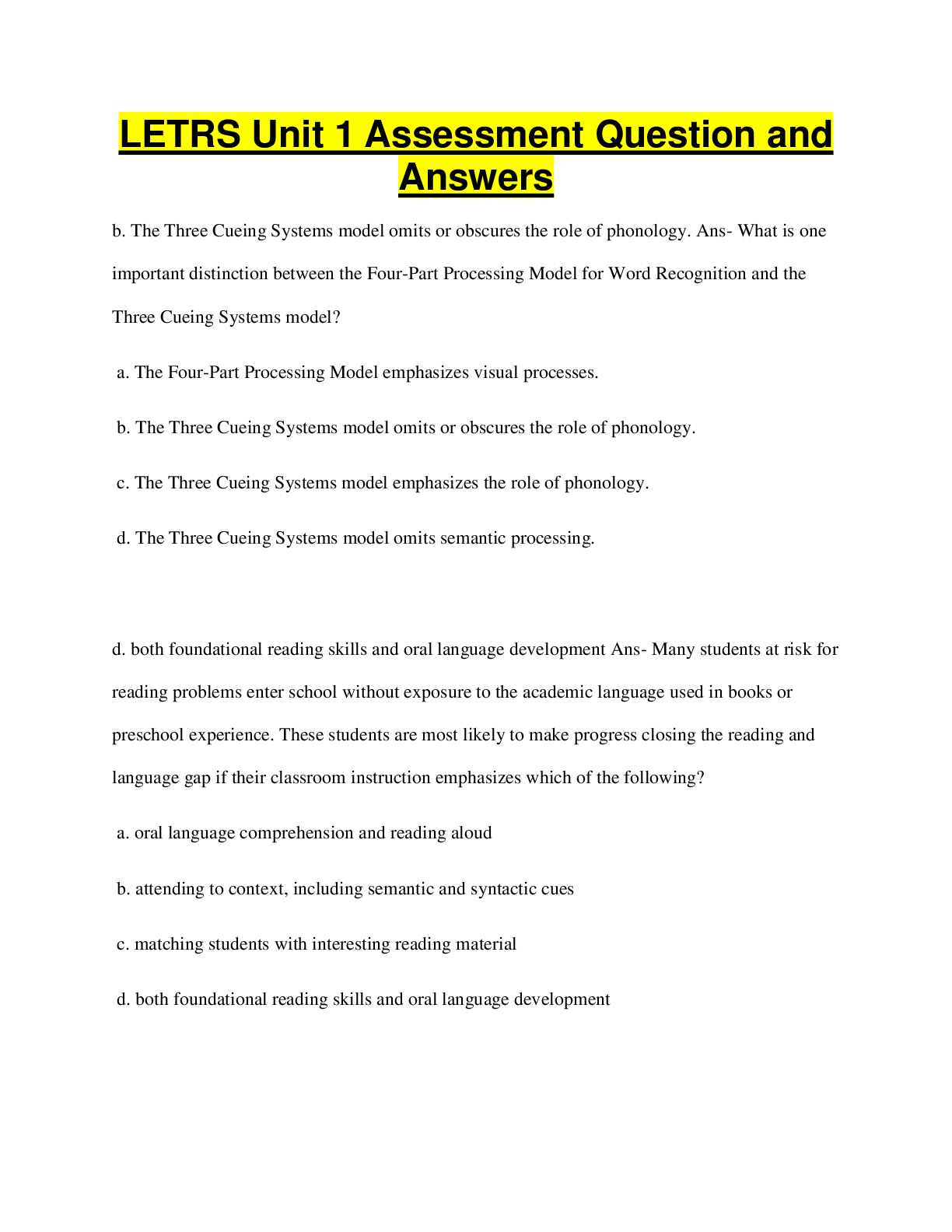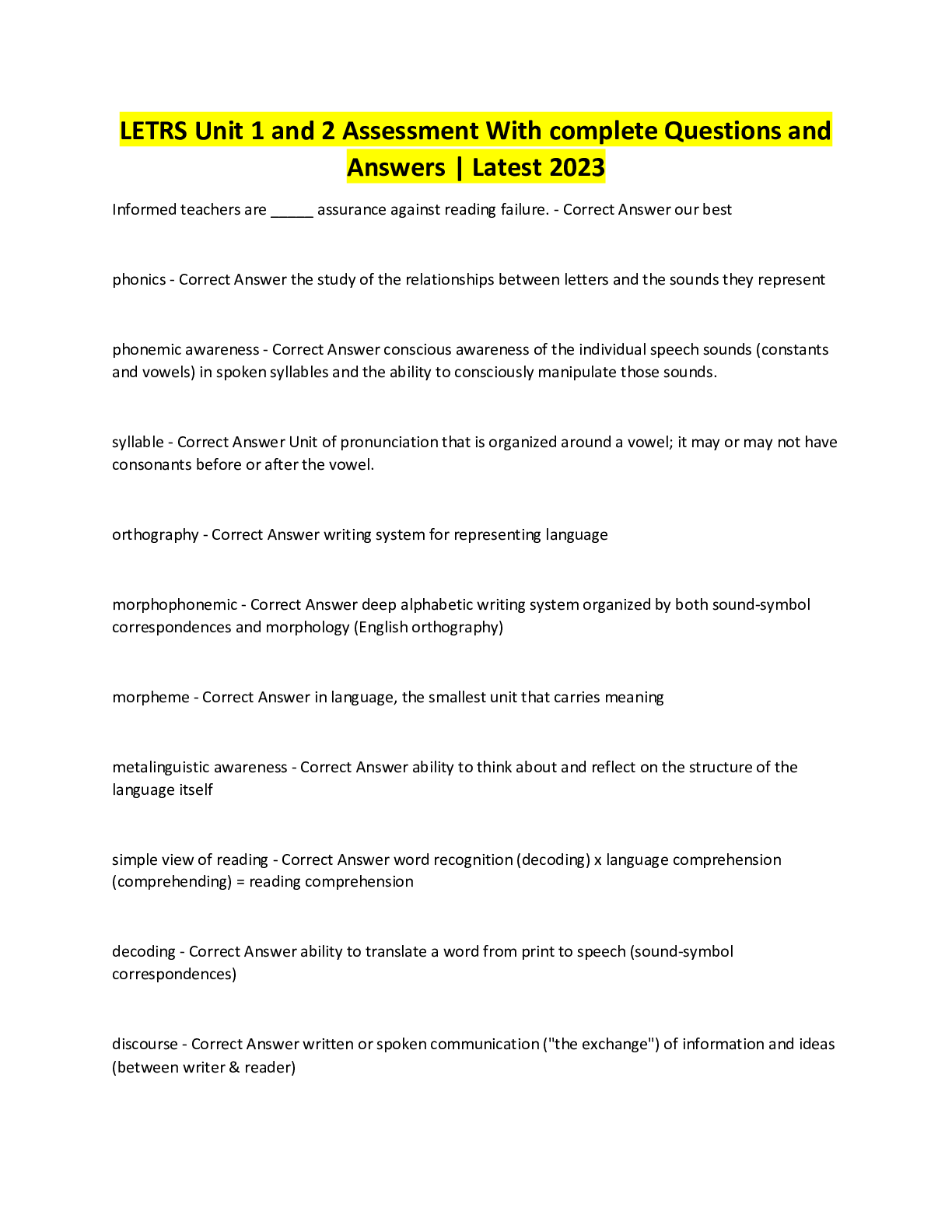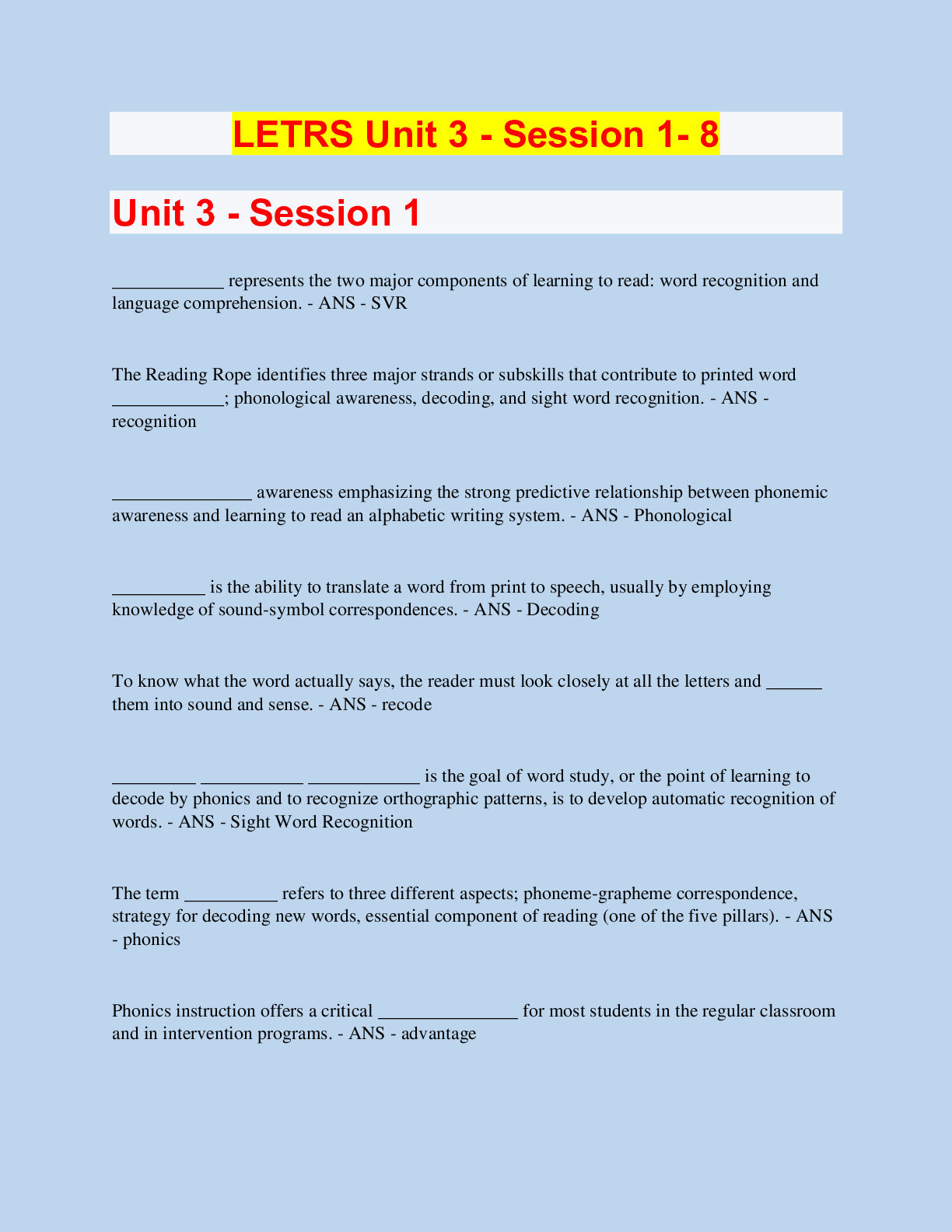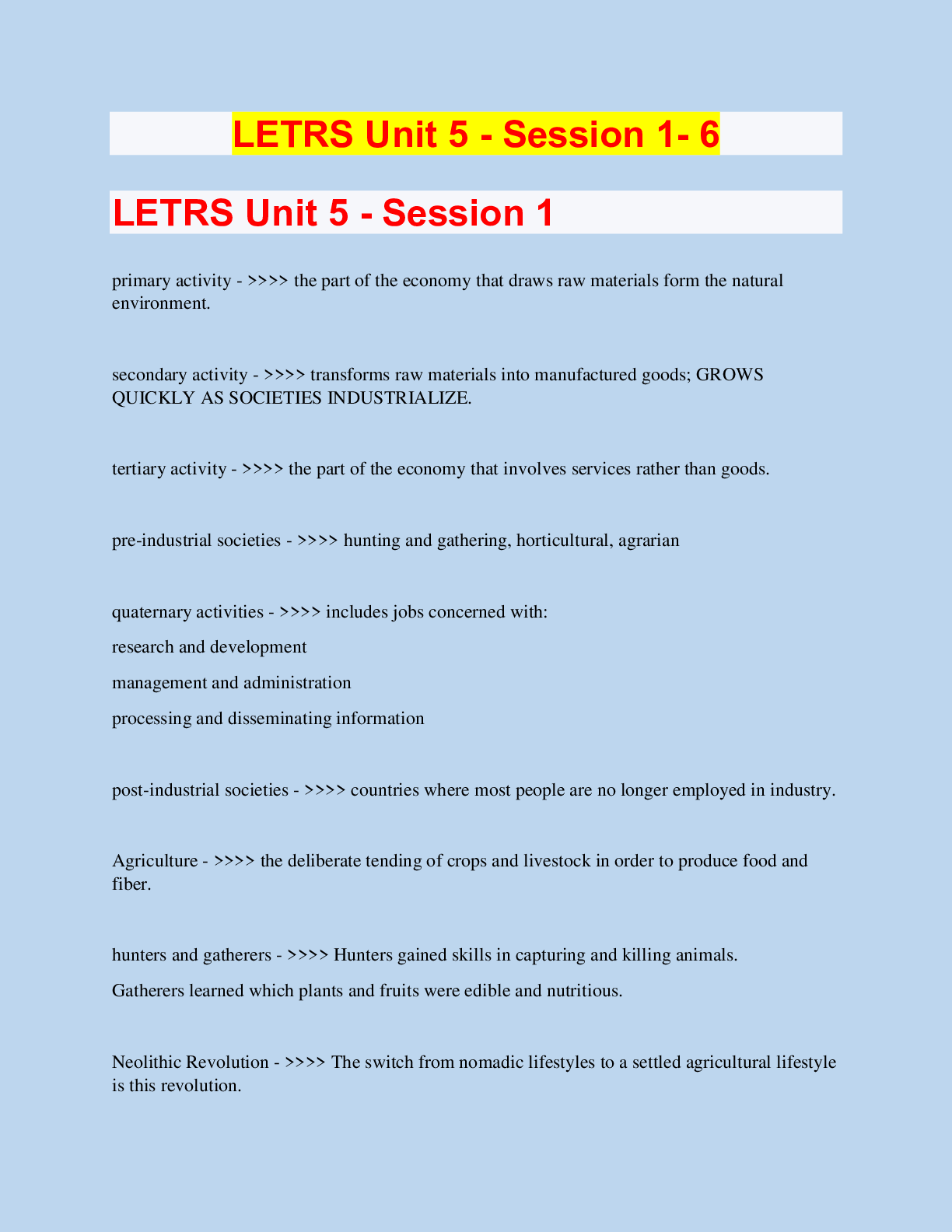Education > EXAM > Early Childhood Education Current Issues in ECE - Research, Trends, and Policy,100% CORRECT (All)
Early Childhood Education Current Issues in ECE - Research, Trends, and Policy,100% CORRECT
Document Content and Description Below
Early Childhood Education Current Issues in ECE - Research, Trends, and Policy quality programs for all children - CORRECT ANSWER focus on teaching and caring for the whole child, along with add... ressing the physical, social, emotional, cognitive, and creative needs of the children they serve. Include safe and health practices and developmentally appropriate environments and curricula. Include families in meaningful ways, celebrate diversity, include all children challenges of quality programs - CORRECT ANSWER challenging to make them affordable and accessible to all families. results of quality programs - CORRECT ANSWER there has been an increase in prekindergarten teachers employed by school districts child care center - CORRECT ANSWER group program that provides care and education for young children during the hours that their parents are employed universal voluntary prekindergarten - CORRECT ANSWER publicly funded preschool usually for 4-year-olds, but sometimes 3-year-olds; available to any family that chooses it preschool - CORRECT ANSWER Piaget's cognitive stage of development for children two to six years in which symbolic though and language significantly change the way they think accountability - CORRECT ANSWER the process of holding teachers, schools, or programs responsible for meeting a required level of performance higher education trends - CORRECT ANSWER some states once required Head Start teachers to have a Child Development Associate (CDA). Now an associate degree or bachelor's degree is the minimum qualification. Teachers who have knowledge of early childhood education and best practices are more likely to contribute favorably to program quality and positive child outcomes Child Development Associate (CDA) - CORRECT ANSWER national competency-based credential for entry-level early childhood educators challenges of higher education - CORRECT ANSWER demand for highly qualified teachers increases, making it a challenge for local and state governments to compensate these teachers with salaries and benefits comparable to other professions with similar education requirements Head Start - CORRECT ANSWER federally funded, national program the promotes school readiness by enhancing the social and cognitive development of children ages 3, 4, and 5 through providing educational, health, nutritional, social, and other services to children and families environments - CORRECT ANSWER children learn best through intentionally planned environments high-stakes-testing - CORRECT ANSWER using standardized test scores to make decisions about individual children, teachers, or schools that have potential long-term consequences Developmentally Appropriate Practices (DAP) - CORRECT ANSWER ways of teaching that engage children's interests and adapt for their age, experience, and ability, to help them meet challenging and achievable learning goals learning centers - CORRECT ANSWER defined areas of the classroom that have a particular purpose with relevant furnishings and materials experiences and brain development - CORRECT ANSWER children's early experiences and the quality of their relationships with other affects brain development. . It is through experiences that the neurons, brain cells that transmit energy and information, interconnect, or forge, pathways to receive information from other cells in the body information pathways - CORRECT ANSWER the more frequent and positive the experiences, the ore pathways are formed, and the stronger and faster they become in transmitting information within the brain. This is significant in the early years when there is an abundance growth - CORRECT ANSWER as the child grows and develops, the neurons that are not used are pruned or lost. By the time an individual is an adolescent, many unused neurons are absent. The neurons will not regrow or appear again in this person's life. This implies that there are significant windows of opportunities for specific learning to occur. An example of this is language, which the brain especially capable of acquiring in the early adolescent years and not so efficient in post-adolescent years positive experiences - CORRECT ANSWER young children who have rich experiences and loving, responsive relationships with caregivers, both families and teachers, are more likely to form more interconnections between neurons. These interconnections build a strong foundation for learning and successful social interactions with others negative experiences - CORRECT ANSWER children who are deprived of stimulating experiences and quality relationships, especially during the ages o three months to five years, will not make the same amount of progress and may not have the same capacity for learning and positive social interactions. The potential for optimal learning and development is reduced. Brain research substantiates the need for stimulating environments and teachers who are knowledgeable in designing learning experiences that promote optimal growth and development early intervention - CORRECT ANSWER services for infants and toddlers who are at risk of developmental delay, and their families evidence-based practice - CORRECT ANSWER a growing consensus among educators is that instruction should be evidence based, which means that research and evidence of positive learning outcomes should inform instruction and curriculum decisions. A challenge is knowing what evidence or research to embrace, or what outcomes to measure. There are conflicting views on what young children should be learning and what outcomes can be linked to academic success and achievement in later school years. Teachers are also divided on appropriate ways to measure learning outcomes, and particularly if it involves standardized testing. Evidence-based instruction will continue to inform early childhood instruction and curriculum. Teachers will need to know and understand what practices are evidence based and how to implement them in early childhood programs. n example is being aware to and using evidence-based reading instruction to improve literacy outcomes for young children. developmentally appropriate practices (DAP) - CORRECT ANSWER there is increasing evidence that developmentally appropriate practices (DAP) enhance children's learning and positively affect their academic achievement. Researchers found preschool programs that used more developmentally appropriate practices produced children with stronger academic achievement in kindergarten and the primary grades. The children of these preschools had higher early literacy and math skills and also demonstrated social skills that would likely predict success in schools settings. Early Head Start and Head Start are examples of programs that use DAP with positive outcomes for children early literacy - CORRECT ANSWER skills and knowledge that come before and lead up to (forerunners) conventional reading and writing [Show More]
Last updated: 11 months ago
Preview 1 out of 4 pages
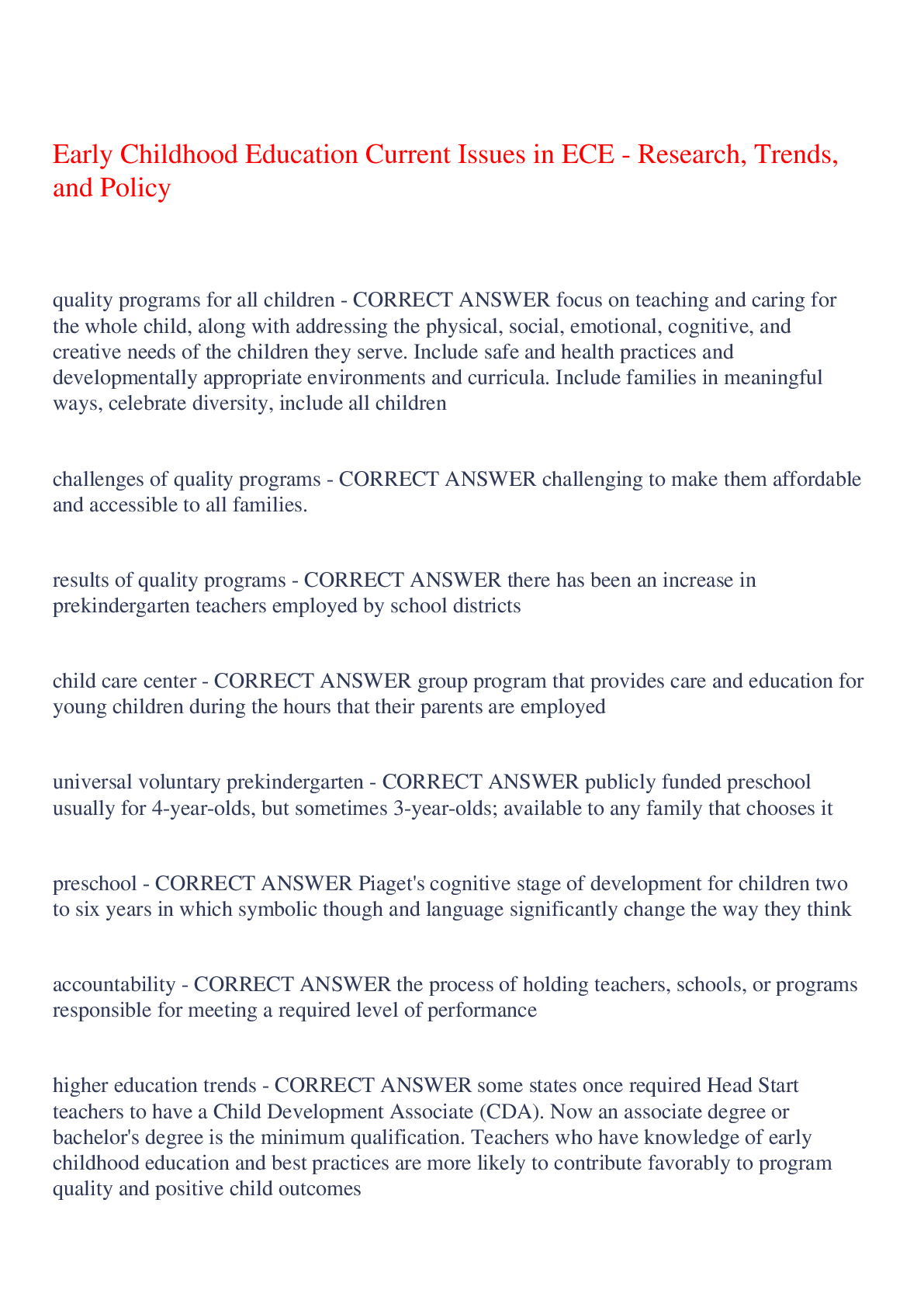
Reviews( 0 )
Document information
Connected school, study & course
About the document
Uploaded On
May 19, 2023
Number of pages
4
Written in
Additional information
This document has been written for:
Uploaded
May 19, 2023
Downloads
0
Views
59


















